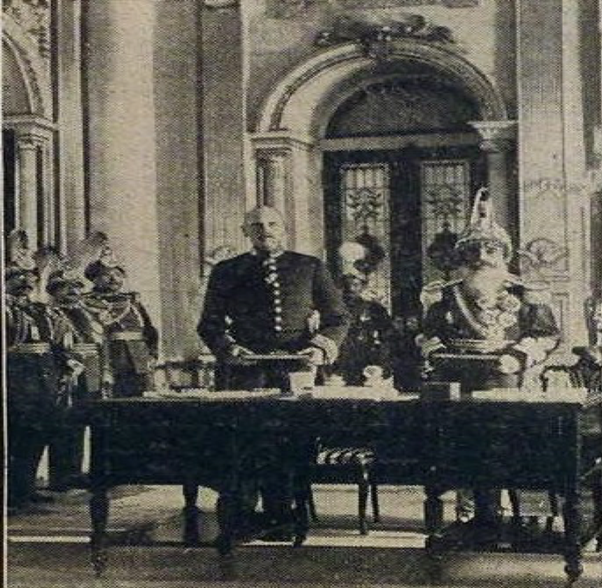The Anglo-Nepal Treaty of 1923
The Anglo-Nepal Treaty of 1923

British Envoy to Nepal Lieutenant Colonel William O’Connor and Prime Minister Chandra Shumsher Rana after signing the Friendship Treaty on 21 December 1923 © Nepali Times archives. [Originally posted in ‘Nepal-Britain Treaty of Friendship 1923: An International Legal Perspective’ on ‘South Asia @ LSE’, the official blog of the LSE South Asia Centre on 28 August 2023.]
Celebrating and reflecting upon one hundred years of an enduring friendship
“There shall be perpetual peace and friendship between the Governments of Great Britain and Nepal, and the two Governments agree mutually to acknowledge and respect each other’s independence, both internal and external.” [taken from Article 1 of the Treaty]
In December 1923, the UK and Nepal signed the historic Treaty of Perpetual Peace and Friendship. Despite Nepal later signing two separate treaties of peace and friendship with the UK and with independent India, the 1923 Nepal—Britain Treaty of Friendship has stood the test of time and remains significant today for both nations and the Brigade of Gurkhas.
The Treaty of Friendship was signed with the UK on 21 December 1923 at the Singha Durbar (Lion’s Palace) in Kathmandu. It was celebrated with a two-day national holiday in Nepal. The treaty built on previous treaties and conventions. It was the result of several years of diplomatic discussions, in an era when letters between the authorities in Kathmandu and London (via the office of the British Viceroy in India) would take months to relay, compared to the seconds to email today.
The 1923 Treaty was partly in response to Britain’s gratitude to Nepal for her support at the Siege of Delhi (1857) and the First World War (1914–18). By the end of the First World War, over 90,000 Gurkhas served and suffered over 20,000 casualties (this number includes deaths, injured and missing). Three Victoria Crosses were awarded.
From Nepal’s perspective, the 1923 Treaty secured Britain’s formal recognition of Nepal as a sovereign and independent country. With much of South Asia under British rule, Nepal remained independent. The Treaty also sent a clear message to China that the Himalayan territory could not be claimed by its neighbours.
Dr Dinesh Bhattarai, former Nepalese Ambassador to the UN stated: “The 1923 Treaty of Peace and Friendship helped Nepal to be recognised internationally as an independent country and not just another Indian princely state […] It opened a new era for Nepal on the world stage.”
Nepal’s retained sovereignty throughout India’s struggle for independence (in 1948). Indeed, after the Second World War, British and Gurkha troops were deployed extensively in Malaya and Borneo to assist these nations’ journeys to independence.
“We chose not to try to colonise, but to partner …” [Andrew Sparks, former British Ambassador to Nepal]
One hundred years ago, Nepal was a Hindu kingdom and the UK was a colonial power. The world and both countries have changed significantly over the past century. The Treaty represents a partnership between our two nations, separated by geography and culture, that continues today. The Gurkha Museum explores the Gurkha soldiers’ contribution to this partnership prior to and since the 1923 Treaty of Perpetual Peace and Friendship; your Museum protects and celebrates the collective and individual stories that have emerged, and continue to do so, from a treaty signed in a bygone age.

